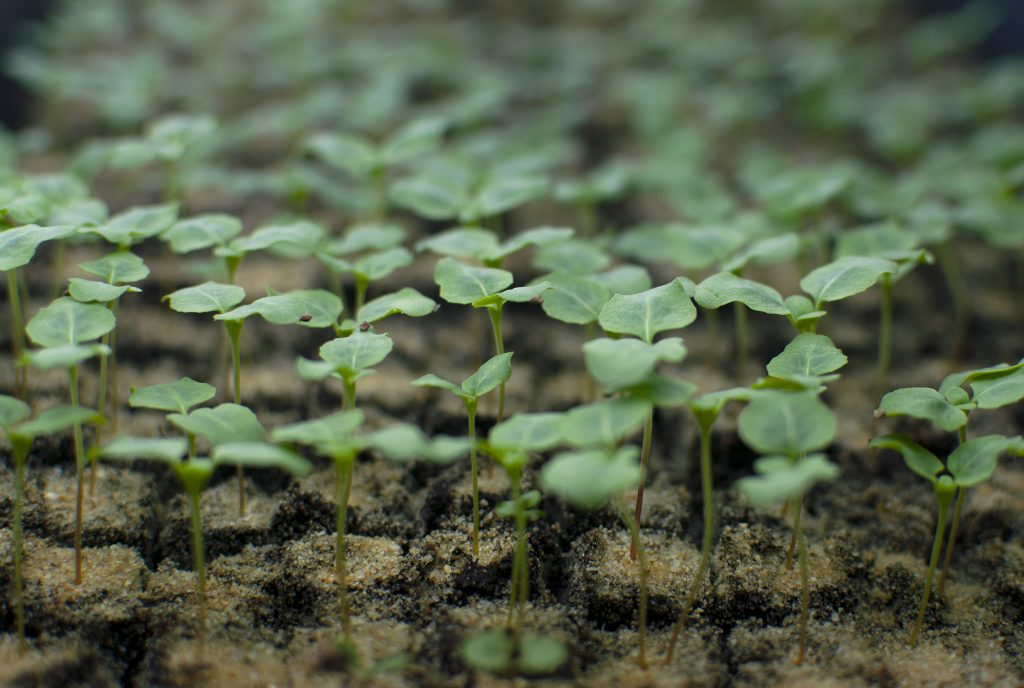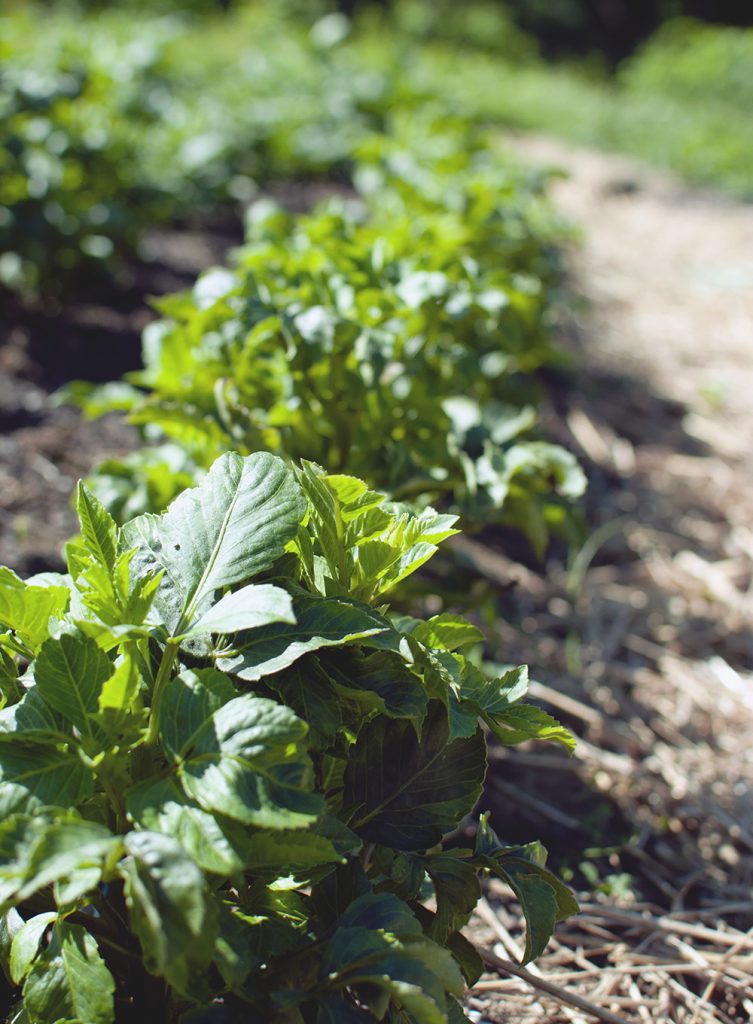Welcome back! We’re gathering our seeds and starting baby flower seedlings over here. In just a few weeks I’ll be starting seeds intended for my own September 2022 wedding. Yay!

Today I’m talking about how I made the crop plan & planting schedule for my wedding flowers.
In Part 1 of this series, we came up with a color palette for my wedding and a big list, in both visual and written form, of the flower varieties I wanted to grow for the big day.


From here, we need to ask some important questions to translate this list into a concrete, easy-to-follow planting schedule and crop plan.


How Many Flowers Will We Need?
The first step is to decide how many flowers I’ll need for my wedding!
This is a multi-step process, and it’s the same process I take all our wedding clients through. First, we need a list of all the arrangements we’ll be making for my wedding. Everything! From the table centerpieces down to the last boutonniere, I need to create at least a rough inventory of wedding arrangements.
Then, I need to make a recipe for each item I want to have at the wedding: bouquets, table flowers, ceremony arch, boutonnieres, etc.
Making Floral Recipes
A floral recipe specifies how many stems of each type of flower will go in each arrangement. Just like cooking, by the time you get into the kitchen, you must ensure you’ve got all the ingredients you need to whip up a masterpiece.
A good floral recipe keeps us on-track, helps us plan our flower crops, and allows the Sea Change team to design, say, 20 table centerpieces that all feel cohesive.
Making a successful floral recipe is a whole blog post topic in itself! But for now I’ll just say that it’s based on my experience making past arrangements and what works and what doesn’t.
Here’s an example floral recipe for a table centerpiece:
Floral Centerpiece Recipe
5 stems dahlias
7 stems lisianthus
7 stems disk flowers
10 stems filler flowers
3 stems spike flowers
10 stems foliage
That’s not our real recipe, but you get the idea!
Some ingredients are left as categories (ie “disks” instead of specifying “zinnias”) to build flexibility into the recipe. This is what I call a “template recipe.” We’re using seasonal blooms, after all, and Mother Nature is unpredictable. A template recipe gives us the all benefits of the recipe structure with the flexibility to decide last-minute what blooms to include.
Doing the Flower Math
Next up, I need to do some flower math and multiply out each recipe to determine what I need for the whole wedding.
For example:
20 centerpieces * 5 dahlias per centerpiece = 100 dahlias for the centerpieces
Now I just need to do that for every ingredient in every recipe in the wedding! No big deal! I’ve got a lovely spreadsheet with fancy formulas that will do this math for me 🙂
The final product of all this flower math will be a harvest list that looks something like this:
Wedding Harvest List
Dahlias – 15 bunches
Lisianthus – 20 bunches
Disks – 22 bunches
Spikes – 6 bunches
Fillers – 30 bunches
Foliage – 40 bunches
By the way, a “bunch” is a unit we use at the farm–typically it means 10 stems!
So, how many flowers will we need for my wedding? We will need 15 bunches of dahlias, 20 bunches of lisianthus, etc etc to pull off my wedding vision.


How Many Plants Should We Grow?
Now that we have our ideal harvest list, I can work backwards to determine how many plants we’ll need to fulfill this harvest list.
Estimating Flower Crop Yields
I keep notes during the growing season on the yields of our different flower crops. But I always over-estimate here. I would rather have too many flowers than too few. So things get a little hand-wavy!
I might make the following planting list based on my harvest list, using dahlias as an example. We can expect to harvest 1-3 stems per dahlia plant in a given week in September:
(150 dahlia stems needed ) / (1-3 stems per plant per week ) = need 50-150 plants
Great! So, being extra conservative with our yield estimates, we’ll need to plant 150+ yellow/peach/white dahlia plants for my wedding.


Since we haven’t focused on yellow dahlias before, we don’t have enough yellow dahlia tubers in our stock to grow 150+ dahlia plants. Good thing I always love an excuse to buy new dahlia tubers 😉
For other crops, like zinnias, it’s easiest for me to estimate yield by the number of bed-feet we plant, rather than by individual plants. I’ll also be pretty conservative with these estimates:
( 10 bunches zinnias needed ) / (.5 bunch per ft per week) = 20 ft zinnias needed
At 9″ spacing, 20 ft = 130 plants
Need to plant 3+ 50-trays of yellow-gold-white zinnias
Plant 1 50-tray each of Oklahoma Yellow, Cresto Cream, Queen Lime / Benary’s Lime

In this fashion, I will go through every flower on my wedding list and work backwards to build a crop plan:
Wedding Flower Crop Plan
Dahlias – 150+ tubers
Basil, Cinnamon – (1) 72-tray
Basil, Lemon – (1) 72-tray
China Aster, Tower Yellow – (1) 50-tray
China Aster, Valkyrie Yellow – (2) 50-trays
Lisianthus – 400 plants, mixed colors
Zinnia, Cresto Cream – (1) 50-tray
Zinnia, Oklahoma Yellow – (1) 50-tray
Zinnia, Queen Lime – (1) 50-tray
etc.

When Should We Start the Seeds?
The final piece of the wedding flower crop plan puzzle! When to plant these things so that they bloom in time for my wedding?
This is also a complicated question to answer. Every year, I collect data on seeding and harvest dates for all our crops, which allows me to have an approximate answer to this question. But, weather and other factors can definitely affect bloom time.
Continuous Bloomers
Some crops, like zinnias, calendula, and marigolds, are cut-and-come-agains, which means they will flower pretty continuously once they reach maturity. Planting plenty of these reliable bloomers will ensure that we at least have *something* yellow to harvest!


Succession Planting for Quick Bloomers
We can hedge our bets by succession planting some of the other wedding flowers.
For things like china asters, which have a short bloom window, we’ll make several different plantings:
China Aster Succession Plan
1st succession – plant ~3/7, expect blooms ~8/10 – 8/24
2nd succession – plant ~4/1, expect blooms ~8/18 – 9/1 (*wedding 9/4)
3rd succession – plant ~4/25, expect blooms ~8/25 – 9/10 (*wedding 9/4)
4th succession? – plant ~5/10, expect blooms ~9/1 – 9/25
We’ll stagger the seeding dates for these successions so they have overlapping bloom time windows. Hopefully at least one of our successions will bloom at exactly the right time for my wedding!

Putting it all together
We are ready to put our crop plan all together. We know what we’re planting, how much of it, and when to start the seeds. Now I can pull that information all together into a crop plan with a built-in planting schedule that will be easy for me to follow:
Wedding Flower Crop Plan
March 7
– Seed 1st China Asters, Valkyrie Yellow – (2) 50-trays
April 1
– Seed 2nd China Asters, Tower Yellow – (1) 50-tray
April 25
– Seed 3rd China Aster, Valkyrie Yellow – (2) 50-trays
– Transplant out Lisianthus, 400 plugs mixed colors
– Seed Zinnia, Cresto Cream – (1) 50-tray
– Seed Zinnia, Oklahoma Yellow – (1) 50-tray
– Seed Zinnia, Queen Lime – (1) 50-tray
May 1
– Plant 150+ yellow dahlia tubers
– Seed Basil, Cinnamon – (1) 72-tray
– Seed Basil, Lemon – (1) 72-tray
– Transplant out 1st China Asters
May 10
– Seed 4th China Asters, Tower Yellow – (1) 50-tray
– Transplant out Zinnias
– Transplant out 2nd China Asters
etc.
Et voilà: we have the crop plan for my wedding!
I use this same planning process to ensure that we’re growing enough flowers to use for all the weddings we’ve got booked, to make bouquets for the farmer’s market, and to use in all the other ways we get our flowers out into the world.
I spend most of the winter working on this crop plan. Once the season really starts to pick up, I need a clear plan like this to follow! Having this crop plan in place gives me peace of mind that all our flower needs are accounted for and nothing has fallen by the wayside.
And… it smooths the way for gorgeous flowers for my own wedding! <3

Samantha is the owner of Sea Change Farm & Flower.
Connect with me!
Sign up for our newsletter here.



September cannot get here soon enough. You and your soon to be husband already look like family. Honestly, I thought you could be siblings with your coloring and facial features; you look beautiful together. Back to my original thought, I’m hoping you post your photos and cannot wait to see your dress. Congratulations!!!